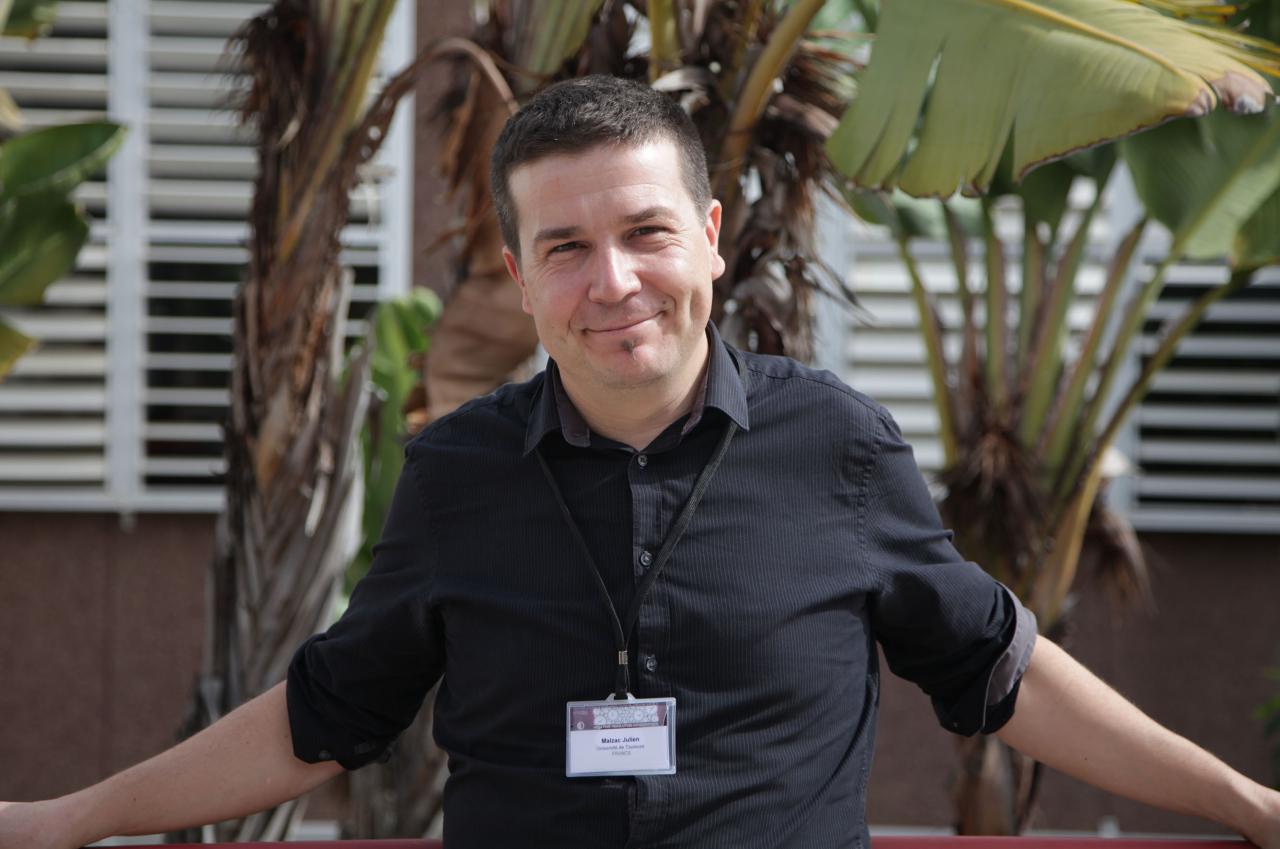Accretion of mater onto a black hole is one of the most energetic processes in the Universe, often associated with powerful outflows. How can matter be expelled from a black hole and how can we use High Time Resolution observations to study this mechanism?
The matter, which is in the form of very hot gas, does not fall onto the black hole directly. It spirals slowly towards the black hole, forming an accretion disc. The gas is also strongly magnetised. The magnetic field is strong enough to influence the trajectory of the gas particles. They will tend to flow along the magnetic field lines. In some circumstances some of the gas may be expelled at velocities approaching the speed of light. Theorists have shown that the magnetic field may also help extract the rotation energy of the black hole and release it in the form of powerful jets. However the details of the formation of outflows are still unknown. The properties of the accretion flow and outflows evolve with time and produce rapid changes in the luminosity that we can observe. This can tell us about the intimate connection between the accretion and ejection processes. Everything happens very quickly in the vicinity of a black hole or a neutron star. For instance, it takes only a few thousandths of seconds for a blob of accreting gas to complete a close orbit around a stellar black hole. The outflow launching process occurs very close to the black hole on time-scales that can be probed only with high time resolution observations (< 1s).
What are the main radiation mechanisms taking place around or near an accreting compact object, such as a black hole or neutron star and why do they occur?
Compact objects radiate over the whole electromagnetic spectrum: from radio waves to gamma-rays. This radiation can be emitted through thermal radiation (i.e. blackbody emission related to the temperature of the object) or non-thermal processes like Synchrotron or inverse Compton. Synchrotron radiation is produced by very energetic charged particles spiralling around magnetic field lines. Relativistic particles accelerated in shocks in the jet will produce synchrotron emission mostly in the radio, sub-mm and Infrared bands. A similar process, called curvature radiation, is related to the propagation of particles along very curved field lines. It can be important in the magnetosphere of neutron stars. An accretion flow can be very hot and contains energetic electrons of temperature up to 1 billion K. It also contains many low energy photons produced by synchrotron radiation or coming from the outer regions of the accretion flow. These photons collide with the hot electrons and gain energy at each interaction. This process is called Inverse Compton scattering. If the photon can make several interactions before escaping the hot gas, the process is called Comptonization. It leads to the production of hard X-ray radiation. Inverse Compton from relativistic particles in the jets may also produce gamma-rays.
What can we learn from their study?
Understanding the radiation processes allows one to extract the information that is encoded in the radiation that we receive from these objects. It enables to measure many physical parameters of the system such as temperatures, velocities, magnetic fields, the energy of accelerated particles and their distribution. It also helps to determine the size and geometry of the emitting regions and test the prediction of theoretical models. By simultaneously observing in different bands we learn about the joint evolution of the different components of the systems (e.g. accretion flow and jets).
From a theoretical point of view, why is High Time Resolution Astrophysics (HTRA) important? What physics can we constrain?
The physics of compact objects involves strong gravitational fields, huge magnetic fields, matter compressed to enormous densities, very high energy particles… Such extreme conditions cannot be produced in a laboratory on Earth. In many cases, high time resolution observations of theses objects represents a unique opportunity to test fundamental theories regarding particle interactions, the properties of dense matter or gravitation. In addition, the interpretation of the observed high time resolution variability often requires the development of physical models describing either mathematically or through numerical simulations the complex dynamical processes occurring in these extreme environments.
Annia Domènech
